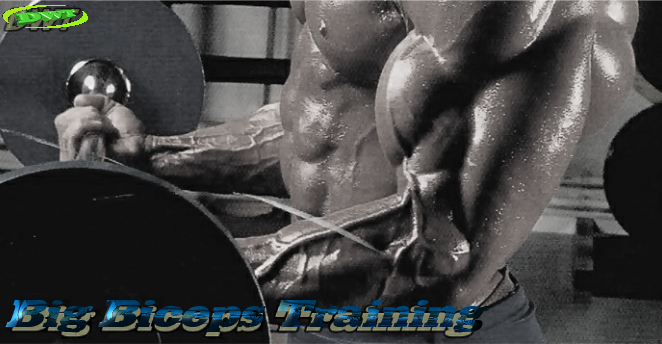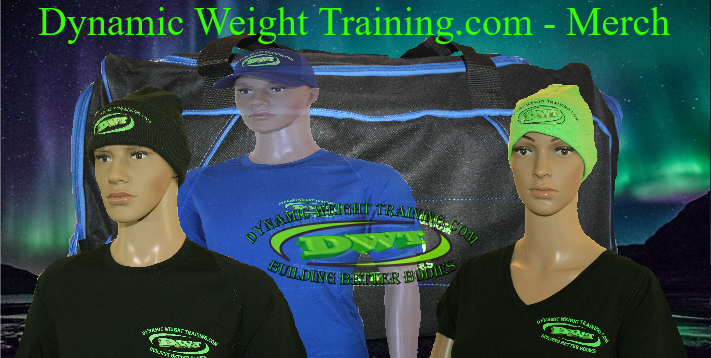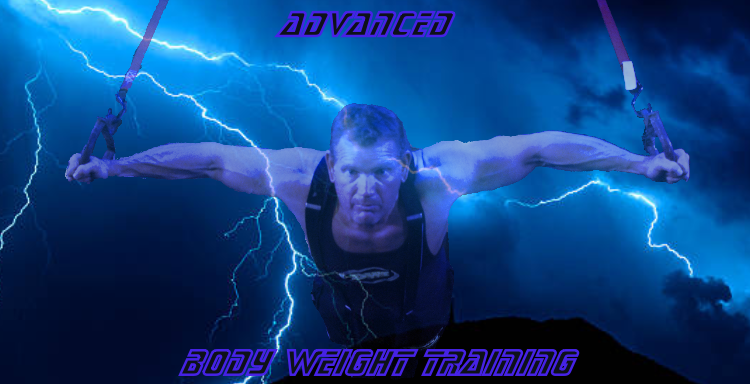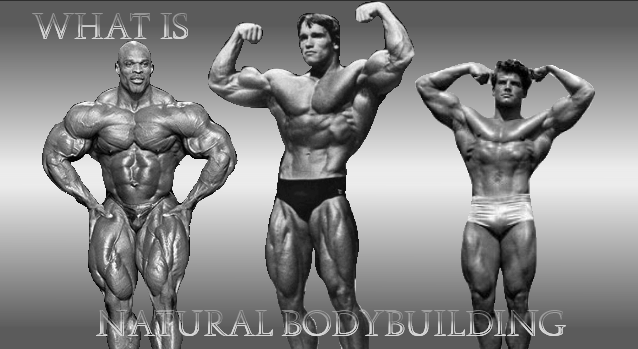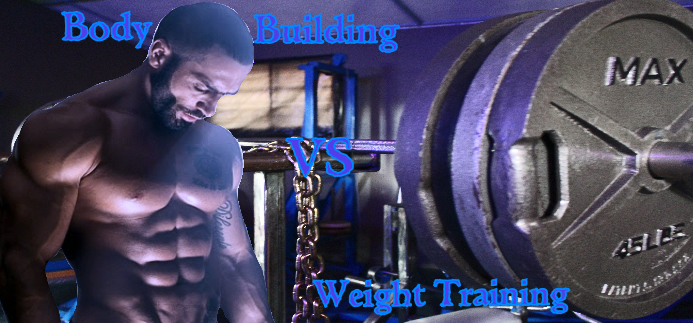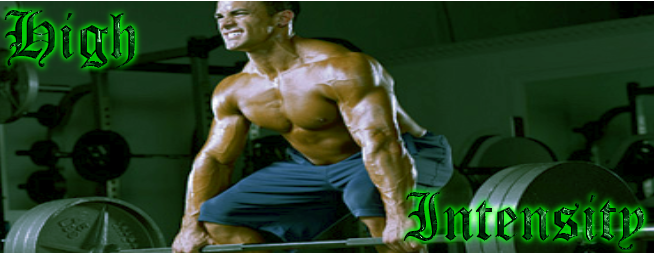Weight Training Arms The Biceps
Weight training arms to develop biceps size is not as complicated as you might think.
Having the right mindset, using the proper exercises and incorporating the skill of using them can get missed. Lets uncover some of the myth and fantasy of developing bigger biceps with some older school ideas and training methods.
Pulling out the 101 biceps training exercise manual isn't necessary; building big biceps is not about volume or how many different exercises you perform, it's about choosing the right ones. Knowing how the wrist, forearms and biceps work together to produce bigger biceps development.
This article also looks at re-discovering how the biceps and brachialis work, including their role and function in upper arm development.
Weight training arms or more specifically: the two inner and outer biceps heads including the brachialis, will be under the arm training scrutiny; of not only how to train them, but...
The importance of how to train them to get them too respond and grow to their fullest!
Each athlete’s goals are different, if you’re after increasing overall size/mass and density: then you have come to the right page.
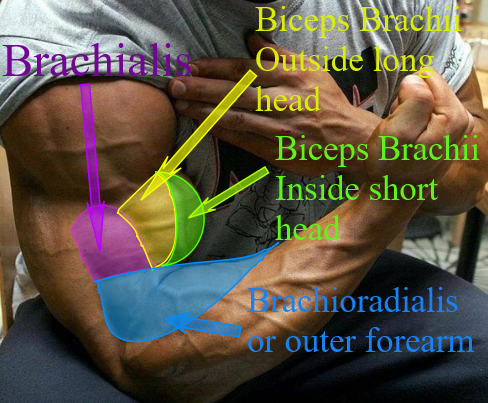
First:
If you’re somewhat new to building biceps size and mass, the biceps consist of two major muscles as the word obviously intends-biceps, means: two.
The inside head of the biceps that resides closest to the chest is classed as the short head. The long headed muscles of the bicep is located on the outside of the upper arm.
Second:
The brachialis sits as a somewhat flat rectangular pancake looking muscle that adds to the overall look of the outside upper arm.
Especially when viewed from the side and often the most overlooked and under trained.
The basic kinesiology lesson for the Brachialis has one function: to raise the arm from a hanging straight position and lifting until the forearm makes an approximate 90° angle, with the upper arm.
The brachialis performs best when your hand is in a pronated position (palms facing the floor, as if preforming a reverse barbell curl).
The brachialis is stressed at a more intense level when it’s forced to pull and bend the arm as in some back movements. e.g.
LAT pulldown’s
Barbell bent rows
Chinning
One arm bent rows
Seated cable rows
These are all great compound exercises to help you develop this area.
Let’s Focus on Big Biceps Training
Try to imagine over the next 10 or 20 minutes, of forgetting some of what you know about increasing bicep size and the types of exercises you currently use to produce this.

This doesn’t matter whether you’re an early beginner or an advanced lifter all I ask is: bear with me as you read through the article to see if I can spark some new ideas in your biceps training.
More often than not we are introduced to new exercises and explanations of them through personal trainers (that often know less than the average lifter). Other times assistance comes from friends who train at the gym you do, or perhaps gym staff or its owner.
All too often friends and gym buddies show you fun easy exercises, or tell you which machines work best for building biceps.
This information even though it’s free, can be misdirecting and can seriously derail plans of building bigger, fuller looking biceps.
So let’s start our arm training over. Instead of trying to fit the biceps to an exercise or machine, let’s fit the exercise to your biceps training.
Starting with the biceps muscle structure and actions to see how we can manipulate the exercise to work the muscle more efficiently, to increase greater gains.
The Missing Link in Biceps Training
How does the Brachialis, make the biceps bigger?
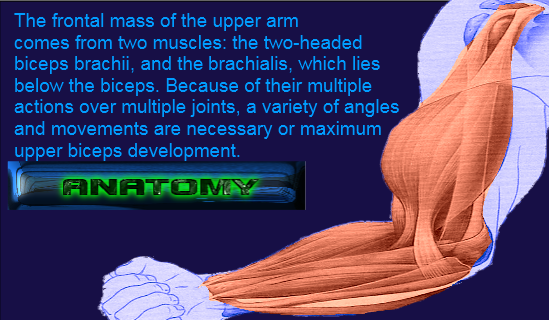
Sometimes lifters can have a tendency to neglect the importance of the the Brachialis.
Not only is it impressive to look at from the side as it clearly separates the biceps from the triceps of the upper arm, applying training intensity, forces new growth outward and upward.
This in turn fills out the overall girth of the upper-outside arm when viewed from the front or side and even more importantly helps develop the coveted biceps peak.
The inside, or (short head) of the bicep is naturally the most developed, strongest and most actively used part of the biceps muscle, from birth in both men and women.
With that said: the biceps can articulate somewhat because: the hands and wrist have a wide range of movement.
Different angles and different intensity levels need to be included, even early on, in order to develop the sides and front of the upper arm.
Added effort should always be given to the (outside) of the biceps as this part is often weak in most lifters. This can be accomplished in exercises like: hammer or reverse curls.
The 3 Different Positions
The three different positions for elbow placement when you’re weight training arms to increase bicep size and shape are...
First position:
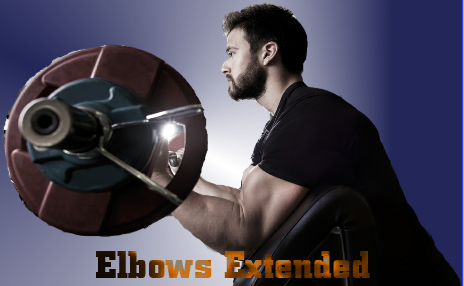
This position is with the elbows out
in front of the body (partially), puts you in the shortened position; the biceps are
shortened at the shoulder joint, (essentially: shortening the range of motion
at the elbow joint, as in a curling motion).
Exercises such as Scott or preacher curls, or seated dumbbell concentration curls where the elbow extends out past the torso against the knee.
As far as increasing size goes: these are often more what I call, (candy exercises), are more commonly known for shaping than mass building.
Due to the more limited range of motion, (the length – tension/shoulder use), relationship is not the same as in free standing biceps movements, reducing mechanical advantage training for quality over quantity.
Second position:
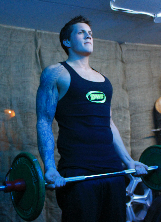
This has the elbows next to your body whether you’re standing
or seated.
This is fairly close to the full resting length of the biceps, the standing barbell or dumbbell curl is a good example.
These are essentially; the meat and potatoes or building block compound exercises, if you’re using enough intensity, these will produce the best overall big biceps gains.
You could also perform seated dumbbell curls as long as elbows are at your side and remain that way through-out the exercise.
As far as muscle force and strength is concerned this is a better elbow position for strength-based movements. E.g., free-standing barbell or dumbbell curls.
Note: supinating with wide grip curls:
If you’ll notice in some of the old black-and-white photos of (Arnold doing standing barbell curls), more often than not his hands were placed well outside of the more traditional shoulder width grip.
The wrists ultimately force the hands into a supinated position increases new biceps width when viewed strait on.
Tip: this wider than shoulder width grip you use should be somewhere in the neighbourhood of 6 to 8 inches past that of the shoulders.
lets move into the final position.
Third position:
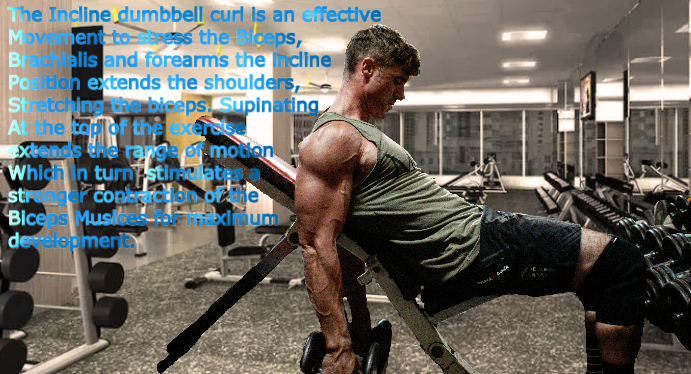
This is achieved by having the elbows hanging behind the upper torso as in the incline dumbbell curl exercise: this provides a much deeper stretch in the lower biceps.
This lengthens the biceps from from their attachments at the shoulders, as the weight is released to the bottom the biceps become stretched to greater than normal length.
Due to the lengthening motion of this exercise puts the biceps at a stronger mechanical advantage, this deep stretch increases a greater recruitment of fibril stimulus increasing lower biceps growth.
Note: you won’t be able to use as much weight as you can in the second position, but...
This lengthening process is important in any weight training arms program. This keeps the biceps back from the chest approx. 90°, and plays a big part in the lengthening exercise process of this muscle group.
If lengthening doesn’t sound important; trust me, it is! This can be a game changer in building biceps shape and thickness.
Supinate/pronate the hands as mentioned,
e.g., seated alternate dumbbell curls: starting with palms facing one another in a (pronated position).
As shown in the figure above:
Begin rotating your wrists during the movement so the palms have circulated 180° or more at completion and facing up near the top of the curling arc (supinated position).
Seated dumbbell curls or standing dumbbell curls can all help you achieve success on weight training arms biceps development.
Seated dumbbell curls are a great exercise for all lifting levels but... are listed here for beginners and early, intermediates, this keeps you focused on the biceps and keeps you from swinging or heaving the weight’s in a seated position.
Try to always stay mindful and choose movements in which you implement both arm flexion and hand supination...
Meaning: turning the thumbs further away from the body as you would using a wider grip with a barbell, as opposed to a closer grip of an EZ-bar.
Weight Training Arms for Beginner Biceps Development
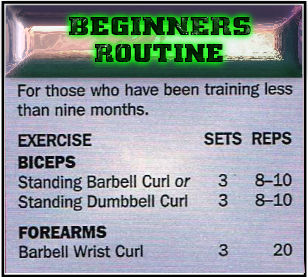
Should center on learning the exercises properly, and of course choosing the right ones, I have made a convenient arm training routine for you, these are great exercises aimed at a beginner level with the proper set and rep ranges for beginners.
I have also included a forearm exercise, keep them in mind and practice them. The forearms don’t take a lot of exercise sets to stimulate them, and their slow to recover. This is important in the early years to keep the forearm strength-in-line with the upper arm.
As beginners trying to increase strength and upper arm size, add a small article of resistance to each new set, enough to challenge yourself nothing more. The idea is to slowly add new stress to the biceps, but at a level that you can handle, as your strength increases, so will your biceps proportions.
Intermediate Biceps Training
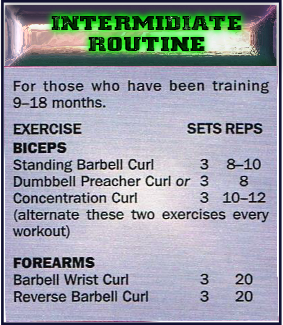
Intermediates need to begin focusing and expanding exercises and sets. I have also included in your routine, a few isolation and compound movements.
Along with a few forearm exercises. Even as you move from intermediate to the advanced level many of these exercises should still be practised.
The only serious differences in some of these exercises, as you move into the advanced level would be, you won’t be doing as much forearm work. Forearm work/exercises are to help keep the forearms strength and development in line with the upper arms.
Try to remember as an intermediate of not overdoing it in the beginning with forearm training, their shape, recuperation level and complexity differs a lot from what the biceps, and what they can handle.
Advancing in your weight training arms routine:
At the advanced level you more than likely have a pretty good understanding of biceps training, including certain exercises that work well and some that don’t. Each person’s mechanics and genetics do very once you’ve reached this level.
Often at an advanced level, drawing on your experience and continuing with the exercises that work well for you is the mark of someone that has experience and know-how in their arm training.
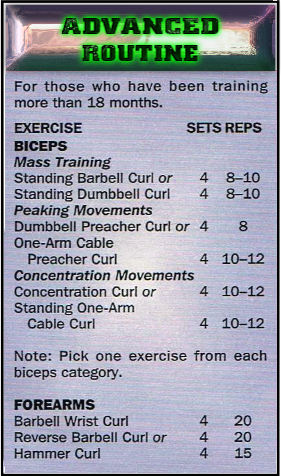
At this point in the advanced level, you should be closely looking and scrutinizing forearm and biceps develop ratios, including shape, size and separation.
Choosing the exercises and the intensity you need to invoke on your biceps and forearms and focus this on the weakest areas first: which brings us to another part of biceps training…
Be sure to Prioritize and train the weakest areas at the beginning of your biceps training, pick the exercises from the advanced chart that are best suited towards what you’re trying to achieve in your biceps development.
If you’re happy with your success so far, but wish to pursue greater gains great; or maybe you’re not happy with your results and just need a change in routine variety or varying exercise stimulus.
At an advanced level, it’s time to dig a little deeper into the mental edge of how to challenge yourself.
Increasing strength and building bigger muscle pumps and choosing exercises that focus your efforts towards the most important thing you’re going after, which is: Bigger Biceps Development.
Genetics vs Weight Training Arms
The two things that I often see other lifters do is:
It's amazing how many guys approach the eight-month to one year mark in their training, and “actually believe in their minds, their advanced lifters”.
The other thing that I see so many do in the early or beginner stages of their lifting, is: they’ve read too many magazines and lift way too heavy for their level, or perform far too many isolation or shaping exercises and often become frustrated with their results and give up!

For example: performing shaping movements like different
cable pulls or seated concentration curls early on, is not going to make your
biceps grow much.
A great biceps peak is something that is genetically given, not man-made. But… That does not mean that you cannot go on to build a beautiful full set of pipes!
A high peak of course does look good on the bodybuilding stage and adds overall height to the biceps, but a thick wide upper arm is also stunning and goes a long ways to filling out the sleeves of your T-shirt, (and may even get you noticed by the ladies).
Concluding:
Producing the best training and mass building efforts for the biceps should be centered on.
First: understanding that three muscles essentially come into play. The Biceps Brachii themselves, the Brachialis, and the upper forearm or Brachioradialis.
To build bigger, better, more shapely looking biceps is simple: in that you don’t need to perform every biceps exercise there is out there. Use the ones shown here. They worked for Arnie, Franco and Lee Haney there’s no reason they won’t work for you.
Simple compound movements such as:
Standing barbell or EZ-curls, standing or seated alternate dumbbell curls. These exercises may sound simple and easy and for the most part, they are...
Just Don’t be fooled by simplicity! I regularly train with these exercises and there is nothing simple about them.
When you start packing on the weight while trying to keep your form as strict as you can.
Sucking your weight belt up to keep your lower back tight to your upper torso and performing Pyramid sets, Drop sets and Supersets - now commonly become the most challenging and demanding for building big biceps size.
Other exercises that are more restricting in nature like preacher/Scott curls, seated or incline dumbbell curls; still hold their importance in biceps training, bringing out the fullness and separation of the major biceps muscle groups.
Weight training arms is about using heavy resistance, but still maintaining control in each exercise. Once you begin to use your legs, lower back and shoulders on the big lifts you’re spinning your wheels, you take over half of the intensity off the biceps and put it on the big muscles.
Save
the big muscle lifts for the days your working legs and back, focus on the exercises
and their movements on biceps day, and don’t let any other body parts steal the
thunder of your hard training efforts, to build bigger biceps.
Intelligent effort + Rest = goal accomplished.
Thanks again for dropping by and checking out weight training arms, for questions try the contact page.
DWT
